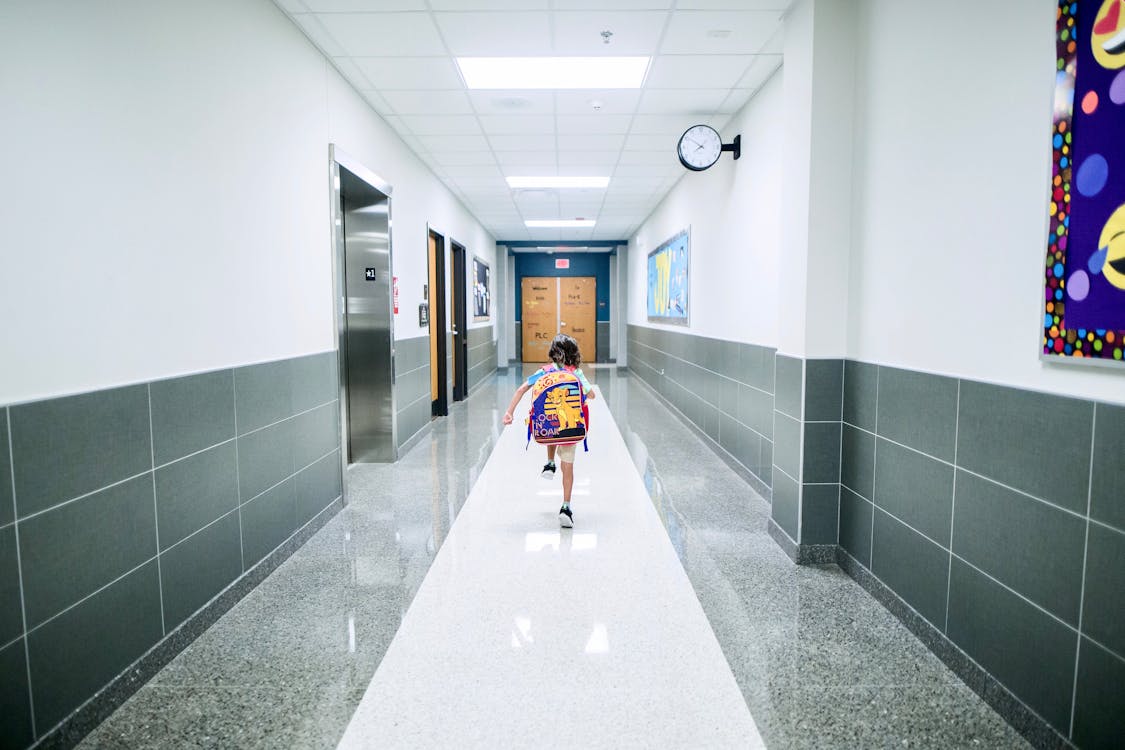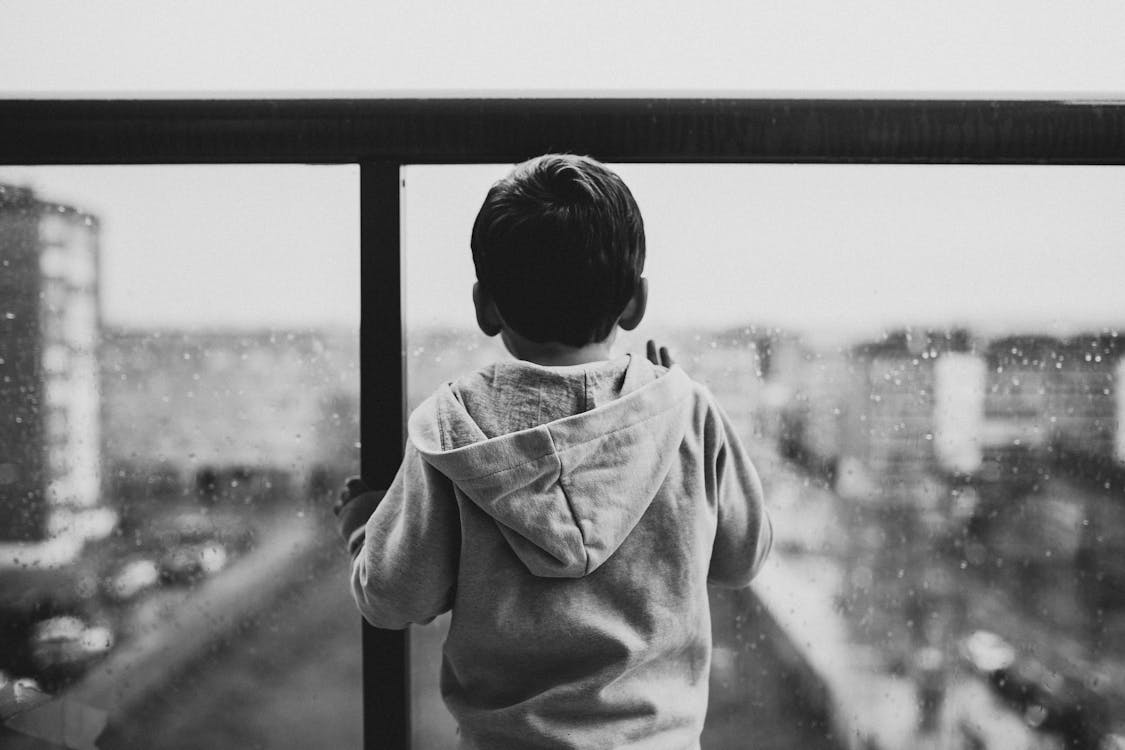People Are Shocked At Story Of 9-Year-Old Boy Who Lived Alone For 2 Years, Fed Himself And Kept Good Grades

In the small, quiet town of Nersac, France, an extraordinary story has surfaced—a tale as heartbreaking as it is inspiring. For two years, a 9-year-old boy managed to survive entirely on his own, with no adults to care for him or provide support. He lived in solitude, relying on scraps for food, yet somehow maintained a sense of normalcy that baffled everyone. Day after day, he attended school, kept his grades steady, and upheld a routine that masked his isolation.
His resilience is a testament to human strength, but his story raises unsettling questions: How could such profound neglect go unnoticed for so long? What does this reveal about the systems designed to safeguard children, and how did an entire community overlook the silent struggles of someone so young? As the world reacts to his perseverance, we are reminded of both the fragility and fortitude of the human spirit, as well as the cracks in the societal structures meant to protect the most vulnerable.
The Quiet Struggles of a Forgotten Child
From 2020 to 2022, a young boy in Nersac, France, endured a reality few adults could fathom. Abandoned in an apartment with irregular utilities, no heating, and an unstable food supply, he survived entirely on his own. While his mother lived just a few miles away, she left him to navigate the harshness of life without guidance or support. His diet consisted of canned food, cakes, and, in desperate moments, tomatoes taken from a neighbor’s balcony. Winter nights were particularly brutal; he relied on multiple blankets to combat the cold in his electricity-deprived home and bathed in icy water to maintain hygiene.
School became his only anchor, offering structure in an otherwise unstable existence. Remarkably, he maintained good grades and a presentable appearance, traits that helped him blend in and avoid suspicion. Teachers and classmates saw him as quiet and reserved, unaware of the burden he carried daily. Neighbors, too, overlooked his plight. He commuted alone, ate alone, and rarely ventured beyond his apartment. To many, his life seemed ordinary. “For me, it was normal, his mother was waiting for him at home,” one neighbor recalled.
The boy’s remarkable ability to mask his struggles highlights a painful truth about children enduring neglect. According to the town’s mayor, Barbara Couturier, his independence acted as a “protective shield,” concealing the depth of his suffering. This phenomenon, recognized by psychologists as a coping mechanism, often allows children to present as stable despite experiencing profound trauma. Studies on chronic neglect reveal that such emotional resilience serves as a survival strategy, enabling children to deflect attention and potential repercussions, all while bearing the weight of their struggles alone.
School as a Lifeline
Amidst the isolation and neglect, school became a sanctuary for the young boy, offering structure and a semblance of normalcy. His unwavering attendance and commendable academic performance masked the hardships he faced at home, leading teachers and peers to perceive him as a “good pupil” who was “happy and well-adjusted.”
The routine of attending classes provided him with a daily purpose, fostering resilience and autonomy. Child psychiatrist Gilles-Marie Valet noted that school “allowed him to remain grounded and to promote autonomy which undoubtedly saved his life.” Valet further explained that the boy’s desire to impress his teachers and his engagement in learning were pivotal in his ability to cope with his circumstances.
Research underscores the significance of educational environments in supporting neglected children. A study published in Development and Psychopathology found that school engagement serves as a protective factor, enhancing resilience among abused and neglected children.
 Image source: Pexels
Image source: Pexels
A Cry for Help That No One Heard
Despite the unimaginable hardship he faced, the boy from Nersac managed to maintain a facade of normalcy. He attended school regularly, achieved high marks, and presented himself as a diligent and polite student. This outward stability shielded him from scrutiny, allowing him to navigate life without adult support. Teachers, classmates, and even local officials saw him as a “good pupil,” with Mayor Barbara Couturier later remarking, “He was smiling, a very good pupil, always clean and polite. Nothing suggested he was abandoned.”
The boy’s neighbors also failed to recognize the signs of his plight. Many assumed his home life was stable simply because he appeared well-kept. One neighbor even remarked that they believed his mother was waiting for him each day, unaware of the reality. This reveals a larger societal issue: the assumption that outward appearances reflect a child’s wellbeing. In earlier generations, neglect might have been noticed by close-knit communities or extended family members stepping in to help. However, today’s increasingly isolated lifestyles often leave children in such situations unseen and unsupported.
This story underscores the heartbreaking reality of how neglect can remain hidden. Psychological studies explain that children enduring chronic neglect often develop coping mechanisms to protect themselves from further harm. These behaviors, such as maintaining composure and cleanliness, can conceal the emotional scars of their struggles, making it difficult for others to recognize the need for intervention. It highlights an urgent need for communities, educators, and neighbors to remain vigilant and proactive in identifying and addressing the less obvious signs of child neglect.
 Image source: Pexels
Image source: Pexels
Discovery and Rescue
In May 2022, after two years of isolation and silent endurance, the young boy’s life took a crucial turn. Mayor Barbara Couturier became alarmed after an encounter with the boy’s mother, who had requested food assistance. Instead of purchasing essentials, the mother opted for processed snacks, prompting the mayor to question her priorities. At the same time, neighbors began noticing that the boy seemed to be living alone, further fueling concerns. Reflecting on these moments, Couturier stated, “I met his mom in May 2022,” emphasizing how these red flags led her to notify local and national authorities.
When police investigated, they uncovered the harsh reality of the boy’s living conditions. The apartment lacked basic necessities like heating, hot water, and adequate food. His survival depended on canned goods, occasional offerings from neighbors, and even tomatoes taken from a nearby balcony. These findings left no doubt about the severe neglect he had endured. By September 2022, social services stepped in, removing him from his mother’s custody and placing him in foster care, where he could finally access the support he desperately needed.
This case sheds light on a troubling aspect of child neglect. Research highlights that children in such circumstances often develop coping mechanisms—such as maintaining composure and staying in school—which can obscure their suffering. The boy’s remarkable self-sufficiency masked the dire conditions he faced, allowing his situation to go unnoticed for so long. His rescue underscores the critical role of community vigilance and the importance of training educators, neighbors, and local officials to recognize even subtle signs of neglect.
Building a Safer World for Every Child
https://www.youtube.com/watch?v=CVQYgHbtr4I&t=37s&pp=ygUMZGVhciBwYXJlbnRz
The story of the young boy who endured two years of solitude and neglect is both heartbreaking and eye-opening. His remarkable resilience shines as a testament to the strength of the human spirit, but his ordeal also lays bare the failures of those around him—neighbors, educators, and society at large—to notice and act upon the signs of his suffering.
This case is a reminder of the hidden struggles many children endure, often masked by outward appearances of normalcy. It underscores the urgent need for communities, educators, and legal systems to work together in building stronger safety nets for vulnerable children. By fostering greater awareness, encouraging proactive intervention, and strengthening child welfare systems, society can ensure that no child is left to face such unimaginable hardship alone.
Ultimately, this boy’s story serves as both a warning and an inspiration. It calls us to reflect on our shared responsibility to protect and uplift every child, ensuring that resilience like his is nurtured in environments of love, support, and safety—not born out of necessity and survival.
Featured image source: Shutterstock
Loading...






